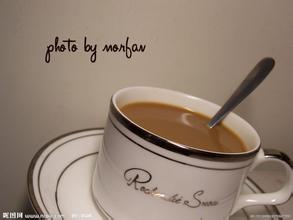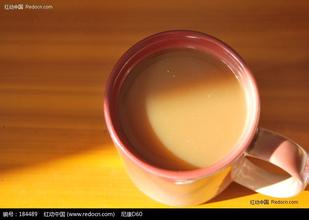Panamanian Irieta Estate Coffee Flavor Description Taste Boutique Coffee Bean Features
Species of Geisha were discovered in the Rose Summer Forest of Ethiopia in 1931 and sent to the Coffee Research Institute in Kenya, introduced to Uganda and Tanzania in 1936, introduced to Costa Rica in 1953, and Panama was introduced in the 1970s by Mr. Francis Coselazin of the Tonba Seven Farm Garden from CATIE in Costa Rica and began to grow Rose Summer Coffee.
Geisha, sweeping the coffee world with the power of a hurricane, the coffee revolution is so fierce that the blue mountains of Jamaica and Kona of Hawaii, which have long occupied the throne of the coffee kingdom, have to stay away. This wild species, which originated in Ethiopia, is now widely used in major coffee producing areas after numerous battles, and its best spokesman is the "LaEsmeralda" estate from Panama.
History of Esmeralda Farm: founded by Hans Elliot, a Swede, in 1924, Esmeralda Farm was not a coffee grower but a ranch. Forty years later, in 1964, Mr. Danielupidason's grandfather, Ruth Lover. Mr. Bidasson bought Esmeralda Farm in order to have an old home after retirement. His grandfather, Mr. Ruth Lover Bidasson, was born in Sweden and was president of the Bank of America and director of United Nations development. His son, Mr. Brais Bidarsson, moved to Panama from California in 1973 and inherited to run his father's farm. In 1987, most of the farms were changed to grow coffee. In 1994, he invested in the machinery and equipment of refined coffee in order to create a brand. Mr. Brais Bidarson and his wife Susan also raised three children, Elligu (born in Philadelphia in 1966). Rachel Lou (born in Sweden in 1967) and Danielu (born in Panama in 1974).
Panamanian coffee is famous for the rosy summer of the Emerald Manor, which is also famous in the Boquete region of its Chiriqui province. Boquete is a town of Chiriqui in the province of Ricki, located near the border between Panama and Costa Rica, close to the famous Baru Baru volcano, with rich and fertile soil, climate and soil that are suitable for producing quality coffee.
In the Pokuit producing area, there are also many excellent manors, except the famous Emerald Manor, Alida Manor, Aqaba Manor and so on, all of which produce high-quality boutique coffee. This is not only due to the superior ecological conditions of the Pokuit region of Panama and the fertile volcanic ash soil of the Baru volcanic land. Another important factor is that the microclimate in the Poquet Heights of Panama is a unique and important resource for boutique coffee in the Pokuit region. This is the Panamanian environment from east to west that allows cold air to converge above 6500 feet through the Central Mountains, thus creating a variety of microclimates in the Pokuit region, making its temperature and rainfall very suitable for plant growth. so the coffee trees grown here grow very well.
In Poquet's unique planting environment, there is naturally not only the rose summer of emerald, the king of coffee, regardless of flavor, quality and value, but I think it is quite extravagant to drink rose summer every day, and even if there is no economic pressure, it is not like eating shark's fin and bear's paw every day. The same is true of coffee. Only by dabbling in a wide range of subjects can you enjoy the pleasure of tasting coffee more.
Then in the land of Pokuit, there is a bean with a high performance-to-price ratio. And it has a very beautiful name-Flower Butterfly. She has 40% high-quality Rosa pedigree, which is composed of Rosa, Kaddura and Kaduai. It is planted in the Baru volcano region of Pokut and grows in the volcanic area at an altitude of 1600 meters. The treatment plant uses fine washing treatment. Panama's special local microclimate leads to abundant rainfall in this area, and a large temperature difference between day and night, coupled with the unique volcanic rock and soil of the volcanic area, as well as meticulous harvesting and fine treatment. It makes this coffee perform well in terms of richness, acidity and floral aroma.

Important Notice :
前街咖啡 FrontStreet Coffee has moved to new addredd:
FrontStreet Coffee Address: 315,Donghua East Road,GuangZhou
Tel:020 38364473
- Prev

Description of Flavor Coffee Flavor in Yejia Ficher Manor introduction of Fine Coffee Flavor Flavor
When it comes to Ethiopia, let's first talk about the origin of coffee. In about the sixth century, when Kardai, an Arab shepherd, was driving sheep to the Ethiopian prairie for grazing, he was very excited and excited to see each goat. He felt very strange. Later, after careful observation, he found that these sheep were excited only after eating some kind of red fruit. Cardai was curious.
- Next

Introduction to the methods for the treatment of taste grindness of coffee varieties in Santa Rita Manor, Colombia
In 1864, Jubal A. Early led Confederate troops to occupy parts of Montgomery County for a short time and attack the District of Columbia. On July 11, Confederate troops attacked Rockville Pike (MD-355), New Cut Road (now Viers Mill Road MD-586) via Rockville and Wheaton to Fo, which is only five miles from the White House in the District of Columbia.
Related
- Does Rose Summer choose Blue, Green or Red? Detailed explanation of Rose Summer Coffee plots and Classification in Panamanian Jade Manor
- What is the difference between the origin, producing area, processing plant, cooperative and manor of coffee beans?
- How fine does the espresso powder fit? how to grind the espresso?
- Sca coffee roasting degree color card coffee roasting degree 8 roasting color values what do you mean?
- The practice of lattes: how to make lattes at home
- Introduction to Indonesian Fine Coffee beans-- Java Coffee producing area of Indonesian Arabica Coffee
- How much will the flavor of light and medium roasted rose summer be expressed? What baking level is rose summer suitable for?
- Introduction to the characteristics of washing, sun-drying or wet-planing coffee commonly used in Mantenin, Indonesia
- Price characteristics of Arabica Coffee Bean Starbucks introduction to Manning Coffee Bean Taste producing area Variety Manor
- What is the authentic Yega flavor? What are the flavor characteristics of the really excellent Yejasuffi coffee beans?

